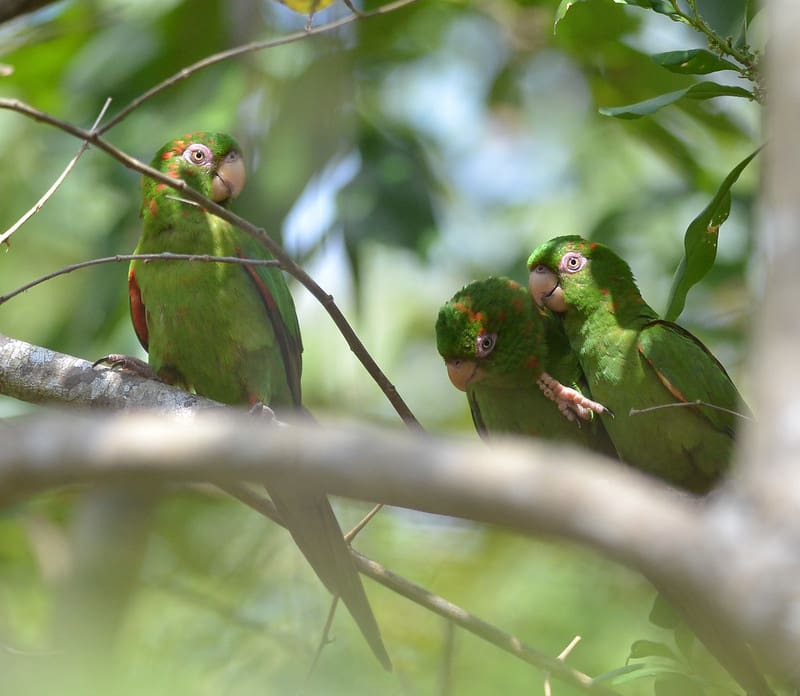The Cuban Conure (Psittacara euops) is imperilled by human activity, the most serious being the loss of its habitat.
Beginning in 1996, the Canadian World Parrot Trust funded a study in Cuba for three years. The objective of the work was to determine wild status and species distribution in Cuba, understand habitat uses (breeding, feeding, roosting), determine diet, foraging and breeding ecology and examine competitive and predatory interactions.
The species is legally protected within seven environmental reserves, including the important Ciénaga de Zapata National Park. Research on these parakeets, the addition of nest boxes and educational outreach aimed to help to preserve populations. Ecotourism programs began in some areas.
Status: IUCN Vulnerable / CITES Appendix II
Population: 2500-10,000
Range: Found on Cuba and formerly Isla de la Juventud (Isle of Pines), West Indies.
Natural history: The Cuban Conure is found in savanna where Copernica and Thrinax palms occur, woodland edge and agricultural areas with trees. It feeds on fruits of mango, papaya, guava, Roystonea palms, Melicoccus bijugatus and Spondias luteus, and seeds of Inga vera, shoots, millet, berries and grass seeds. Birds are seen generally in family groups or small flocks but sometimes gather in larger congregations of several hundred, and will socialize with the Cuban Amazon.

